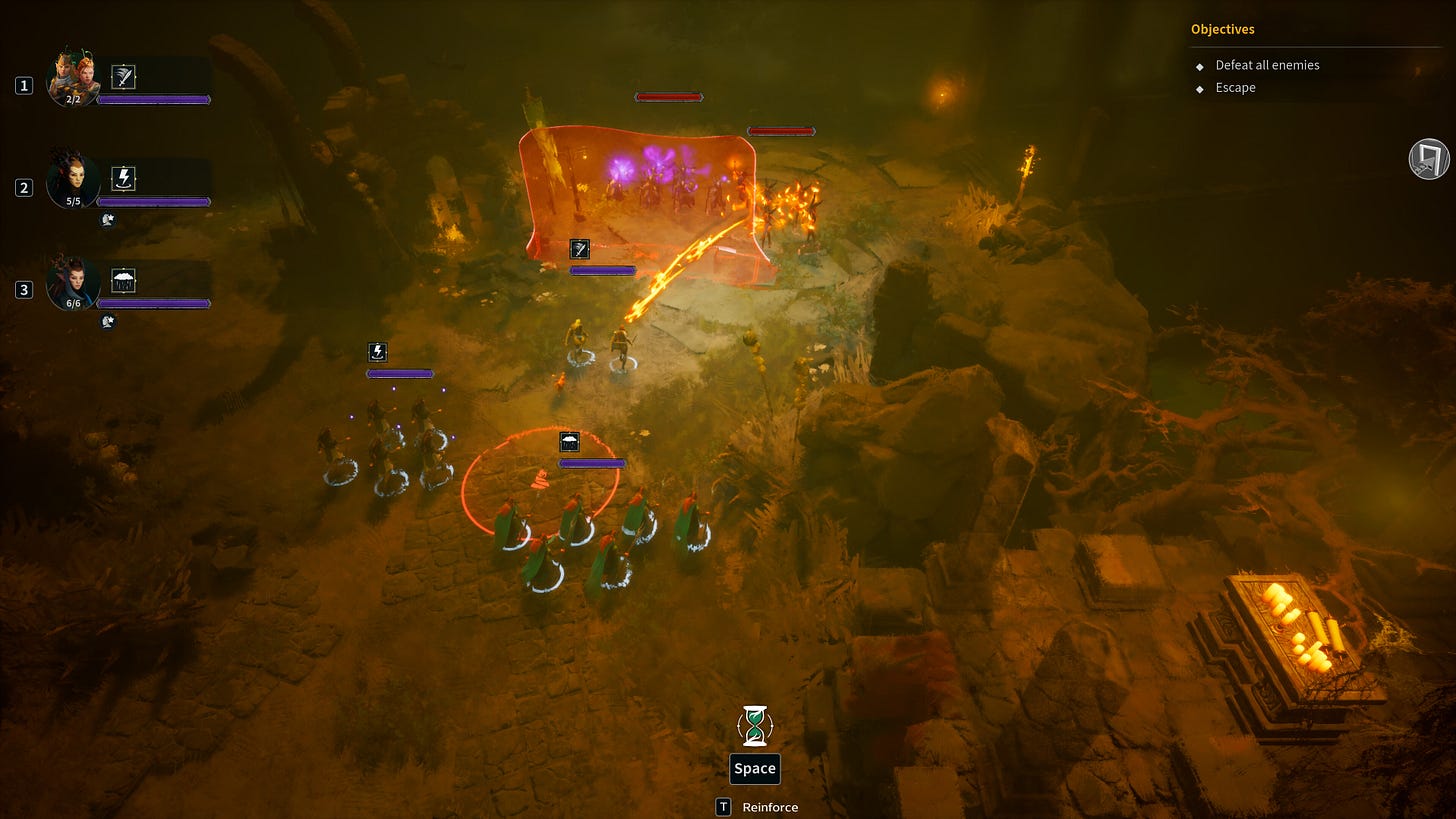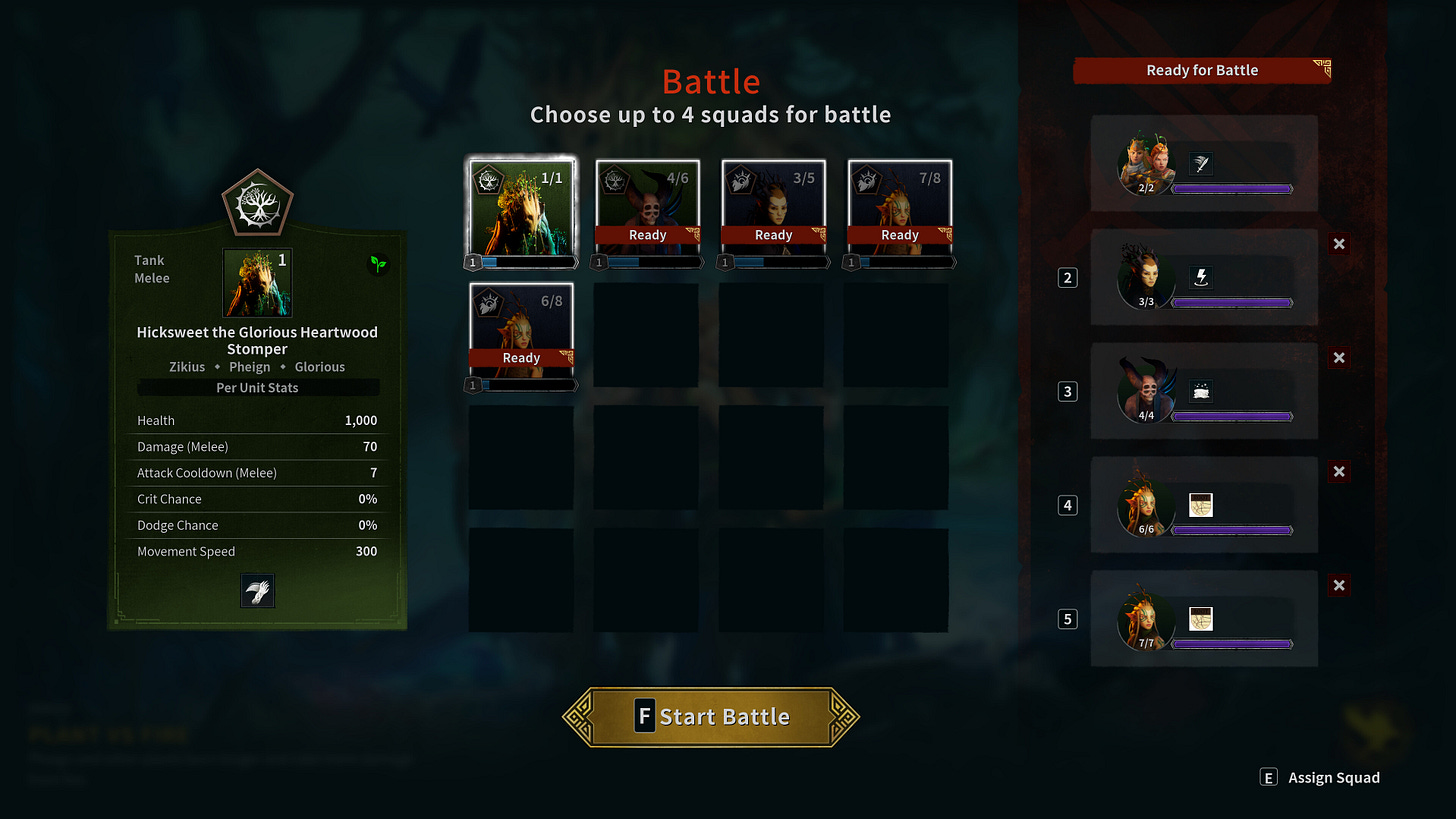WarTorn Review
A bold RTS-roguelite hybrid that delivers big ideas, but struggles in execution.
Wartorn arrives with a bold idea, blending real time strategy with roguelite progression, elemental combat and a branching adventure map. On paper it sounds like something fresh and exciting. After spending time with it, and seeing how players feel about the release, it becomes clear that Wartorn has moments of brilliance surrounded by areas that still need refinement.
This breakdown should give you a clear sense of what to expect.
Wartorn Gameplay
The heart of Wartorn is its hybrid design. Each run sends you across a branching map filled with battles, events, encounters and optional quests. These choices shape the flow of your run and create memorable variations every time you start over.
The elemental system is one of the strongest parts of the experience. Fire, water, lightning, tar and plant types all react in interesting ways. Flood an area and electrocute everything inside it, ignite tar to produce massive damage, or use water to support plant units. When these interactions come together they feel smart and rewarding.
Meta progression between runs helps keep the experience engaging. Even failed attempts give you upgrades and new units that alter how your next run will play.
Beyond that, Wartorn includes some deeper systems. You build a caravan of units that travels across the Isles of Talaur. That caravan is your lifeline, and if it collapses your run ends. You recruit squads from fantasy creature types such as goblins, elves, treefolk and demons. Each group has its own abilities and synergies.
You also have a family system where rescued family members unlock heirlooms and permanent bonuses that carry into future runs. Items, trinkets, passive upgrades and hero spells provide a further layer of build flexibility.
Despite the ambition, the gameplay can feel uneven. Performance drops are noticeable during some boss encounters. Pathfinding becomes a problem fairly often, with units becoming stuck on terrain or on each other. Micro-managing small squads can occasionally turn into a fight against the controls rather than the enemy.
Melee combat suffers from visual clutter. When too many units collapse into one space it becomes difficult to tell who is attacking or even if attacks are being delivered at all. The lack of clear feedback reduces the excitement of what should be high intensity encounters.
The castle hub area is another example of unfulfilled potential. It looks cool at first glance, yet feels empty and overly large, which makes downtime less enjoyable than it could be.
Strengths of Wartorn
If you are wondering whether Wartorn is worth trying, there are several areas where the game does shine.
A genuinely original mix of RTS and roguelite ideas that stands out in the strategy genre
Branching maps that add replayability and fresh decision making
Elemental systems that encourage experimentation and tactical creativity
Quest events that can help or hinder your progress, creating tension in each run
A clear sense of long-term growth through meta upgrades, family heirlooms and caravan progression
These elements show what Wartorn is trying to achieve, and many of them already work well.
Weaknesses That Hold Wartorn Back
There are also recurring issues that limit the overall experience.
Performance drops during intense encounters
Pathfinding that can cause units to freeze or move unpredictably
Combat that can feel unclear or lightweight during busy moments
Visual overload when many units group together
A hub area that looks interesting but feels empty
A general sense that the game needs another layer of polish
These frustrations appear often enough to affect the enjoyment of long sessions.
Visuals and Presentation
Wartorn has a distinctive fantasy RTS look with strong elemental effects and a readable overworld map. When battles remain manageable, everything appears clear enough. During larger encounters, however, particle effects and overlapping units cause the screen to become chaotic. The frame rate can suffer during these sequences, which makes readability even worse.
The user interface is functional but would benefit from sharper communication during high pressure moments. The villa and castle hub also need more meaningful interactivity to feel like an actual home base rather than unused space.
Sound and Atmosphere
The audio design fits the world well. Spells crackle, units shout their commands and the overall ambience reinforces the war torn setting. The soundtrack complements the gameplay and the tone of the world perfectly.
Because combat is occasionally unclear, the sound design sometimes has to act as the main indicator of what is happening. That is a difficult job for audio alone, and it highlights how much clearer the visual feedback needs to be.
Final Verdict: Is Wartorn Worth Playing?
Wartorn is full of fresh ideas and clever systems. Its hybrid approach to real time strategy and roguelite structure feels genuinely new, and the elemental interactions suggest a game that could become something special with more development time.
However, performance issues, unclear combat, pathfinding problems and underdeveloped hub mechanics keep it from reaching the heights it aims for. Wartorn feels like a strong concept that still needs refinement before it can stand alongside more polished RTS experiences.
You will enjoy Wartorn if you:
Like experimental strategy games
Enjoy roguelites that reward repeated runs
Want elemental interactions and tactical build combinations
Do not mind some technical roughness
With updates, Wartorn could grow into a standout title in the strategy genre. Right now, it remains a promising but uneven experience.







